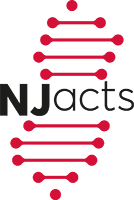 Please read Dr. Aleksunes’ article in Reproductive Toxicology titled, “Placental BCRP transporter reduces cadmium accumulation and toxicity in immortalized human trophoblasts.“
Please read Dr. Aleksunes’ article in Reproductive Toxicology titled, “Placental BCRP transporter reduces cadmium accumulation and toxicity in immortalized human trophoblasts.“
Cadmium (Cd) is a ubiquitous and persistent toxic metal and currently ranks #7 on the 2019 Agency for Toxic Substances and Disease Registry Priority List of Hazardous Substances. Human exposure to Cd occurs through ingestion of contaminated diet and drinking water, in the workplace through inhalation of airborne Cd, and by smoking tobacco cigarettes Pregnancy is a particularly sensitive period for Cd exposure due to its ability to disrupt or compete for uptake of essential nutrients including glucose and zinc. Epidemiological studies have observed an association between maternal Cd exposure and adverse pregnancy outcomes including reduced infant size and weight at birth as well as preterm delivery. In one study, non-smoking mothers with serum concentrations of Cd ≥ 1.06 μg/L were over 40% more likely to have an infant that was small for gestational age [10]. In a recent systematic review, greater exposure to Cd was associated with reduced head circumference of infants and increased risk of low birth weight, preterm birth, and small-for-gestational age. Cd levels in cord blood account for only 10% of the total concentration found in maternal blood suggesting that the placenta serves as an effective barrier against fetal Cd exposure and instead serves as a site of Cd accumulation. To read the full article.
Placental BCRP transporter reduces cadmium accumulation and toxicity in immortalized human trophoblasts. Zhang R, Walker L, Wen X, Doherty C, Gorczyca L, Buckley B, Barrett ES, Aleksunes LM. Reprod Toxicol. 2023 Oct;121:108466. PMID: 37660740 PMCID: PMC10591833 DOI: 1016/j.reprotox.2023.108466
